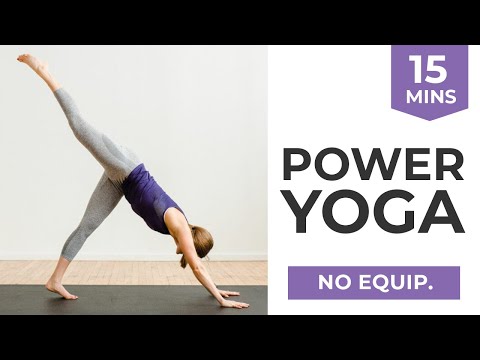
There are many different styles of yoga, and choosing the right one can be challenging. The most popular styles of yoga are Hatha, Vinyasa, and Ashtanga. Some are easier to learn than others, and some are more challenging than others. Some focus on posture correction and others emphasize flexibility and breathing. You will get the most out of your yoga experience by choosing the one that is right for you. If you want a workout with spiritual value, consider trying chair-based yoga.
Slow-flow yoga is ideal for beginners. The pace of the Vinyasa style should be moderate for beginners. For strength building, a gentle and slow class is best. For those who want a more challenging practice, try Ashtanga. This yoga practice is considered the OG. It is physically challenging and very demanding. It incorporates isometric holds and synchronization between breath and movement.

Hatha yoga is a high-intensity, dynamic practice that involves arm balances as well as inversions. The goal is to increase strength by engaging the core of the body with fluid, precise movements. Power yoga is usually more difficult than Ashtanga. However, it will make you sweat. Power yoga is a great way to increase your cardiovascular endurance and strength. This style of yoga will get your moving and give you great feeling.
A good choice for people who are stressed is restorative. It promotes relaxation and stress relief. It is often performed with props. Some restorative classes have only a few postures and allow the practitioner to fall asleep as they do them. It is great for people recovering from injuries or who lead a busy life. Restorative yoga is a good choice if you find it difficult to do yoga.
Both styles of yoga can be beneficial. However, you can have a balanced lifestyle and avoid stress by practicing both. Integral classes are a good option if you want to learn more about yoga. This is the best type of yoga for spiritual people. However, it may not be suitable for everyone. Integral yoga can provide many benefits including a general feeling of well being.

Restorative Yoga, a form of advanced yoga, is also known as "restorative yoga". This style uses props to support the spine and is very popular among students. It is a great way to promote deep relaxation and help increase strength and flexibility. Before you sign up for a class, research the type of yoga you are interested in. These benefits are innumerable.
FAQ
What can I do to improve my mental health and well-being?
Everyone needs mental health, especially when we feel stressed at work, school, home, or family. Regular exercise, healthy eating, quality sleep, and spending time with loved ones are the best ways to improve your mental well-being. Exercise releases endorphins which makes us feel happier. Eating healthy foods also helps our bodies function properly. Being well rested gives you energy for the day. Spending quality times with loved one improves relationships and reduces stress.
Why is it important that students have a healthy mind?
Students must be healthy mentally to be able both to concentrate on school and to do well academically. You can't do well at school if your mind isn't in the right place. Students with depression tend to skip class, which can lead students to have poor grades. This may result in dropping out of highschool and eventually college.
Talk to your teachers or parents if you are struggling with depression. These people will be able help you receive the care that you require.
It is important to understand that not everyone with depression needs medication. Talk therapy is effective for many people. If you are interested in getting help, you should see a counselor.
How does mental well-being affect daily life?
At some point in our lives, everyone is susceptible to mental illness. The only difference between someone with mental illness, and those without, is the fact that they do not seek help. Talk to someone about something you are feeling. There are many treatment options available for anxiety, depression and stress.
Statistics
- Similarly, for positive mental health, there is likely to be substantial agreement about some typical components (e.g., resilience to stress) 6, and controversy about more atypical components (e.g., career consolidation). (ncbi.nlm.nih.gov)
- According to the National Alliance of Mental Illness (NAMI), one in five Americans experiences mental health issues which translates to more than 40 million adults a year. (doctorondemand.com)
- It does have some influence, but not nearly as much as we might think, so focusing less on attaining wealth will likely make you happier (Aknin, Norton, & Dunn, 2009); (positivepsychology.com)
- More than 40 million adults in the United States have an anxiety disorder, but less than 37% of people seek mental health treatment for their symptoms. (talkspace.com)
- In any given year, an estimated 18.1% (43.6 million) of U.S. adults ages 18 years or older suffered from any mental illness, and 4.2% (9.8 million) (healthypeople.gov)
External Links
How To
How to determine if one needs to seek help from a mental health expert
To determine whether you need to seek professional assistance, some signs should alert you to the possibility that your problem might require professional attention. If you notice any warning signs, it's best to consult a doctor.
-
You feel lost in your own head.
-
You've been having trouble sleeping.
-
When you try and concentrate, your thoughts seem to race.
-
You start to think about suicide.
-
You feel helpless.
-
It feels like your life isn’t worth living.
-
You have lost interest and are no longer interested in the things you loved.
-
You have stopped eating.
-
You are now withdrawn.
-
You have started using drugs or alcohol to cope with stress.
-
You have lost friends or family members.
-
Other physical symptoms include headaches, stomachaches and backaches, as well as chest pains.
These signs are important indicators that you need to seek medical attention immediately.